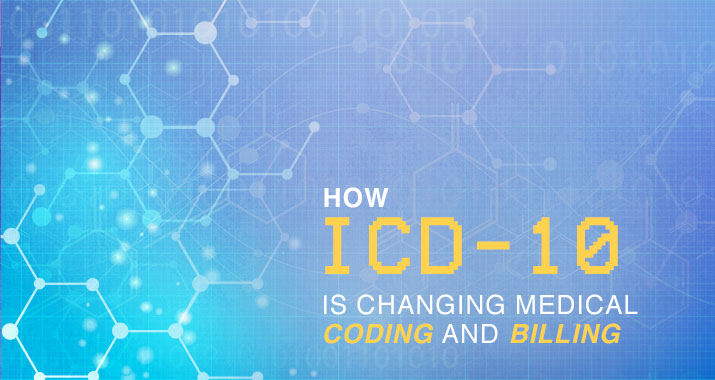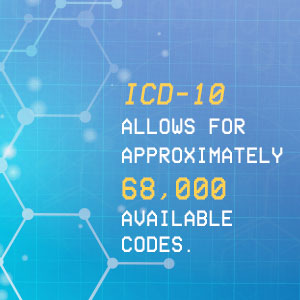How the Shift From ICD-9 to ICD-10 Is Changing Medical Coding

On Oct. 1, 2015, medical coding in the United States changed forever when the entire healthcare industry shifted from using ICD-9 to ICD-10 codes, affecting providers, insurance companies and patients. What exactly does medical coding involve? And why was the shift so important?
The History and State of Medical Coding
According to the World Health Organization, the history of the International Classification of Diseases (ICD) dates to the 19th century. Leaders in medicine, including famous British nurse Florence Nightingale, proposed using a uniform list of causes of death and other health statistics. In 1948, the World Health Organization (WHO) was established and took ownership of the ICD system. Ever since, WHO has convened international conferences for revising and updating the ICD.
The ninth version, ICD-9, was adopted in the 1970s; ICD-10 was adopted in the 1990s. More than 100 countries use ICD to report mortality data. The ICD system defines diseases, disorders, injuries and other health conditions. “It allows the world to compare and share health information using a common language,” WHO explains.
The Differences Between ICD-9 and ICD-10

In the United States, ICD-9 was used to code and classify mortality data from death certificates until 1999, according to the Centers for Disease Control and Prevention. That’s when ICD-10 began to be used for mortality coding.
The United States also used ICD-9 to develop a system for assigning codes to diagnoses and procedures in clinical settings. ICD-9 contained about 13,000 diagnosis codes and 3,000 procedure codes; codes had a five-character limit. In contrast, ICD-10 contains approximately 68,000 diagnosis codes and 87,000 procedure codes, with a seven-character limit.
“Diagnosis and procedure codes are a way for physicians, hospitals and other providers to exchange information with health plans to describe patient conditions and the services provided to treat those conditions,” the American Hospital Association says. “They are embedded in nearly every clinical and billing operation nationwide. Diagnosis codes are an important piece of information to describe patients’ conditions, justify the services provided and demonstrate medical necessity.”
Difficulties With ICD-9
There grew to be several problems with ICD-9. The American Health Information Management Association (AHIMA) points out that the vast changes in medicine and technology since the 1970s made ICD-9 outdated. And many years after ICD-9 was developed, it began to be used in the processing of insurance claims, which was problematic.
AHIMA describes numerous benefits of the ICD-10 code set. These include:
- Medical coding can be complete, accurate and detailed.
- Healthcare providers can be specific in documenting the severity and complexity of diseases.
- Payers and providers can save money through cost analysis.
- Healthcare organizations and professionals worldwide can exchange meaningful data and share best practices.
In summary, ICD-10 provides “payers, policy makers, and providers with more detailed information for establishing appropriate reimbursement rates, evaluating and improving quality of patient care, improving efficiencies in healthcare delivery, reducing healthcare costs, and effectively monitoring resource and service utilization,” AHIMA maintains.
Still, the United States was slow to implement ICD-10 compared to some other countries. In 2011, the U.S. Department of Health and Human Services set an implementation deadline of Oct. 1, 2013, only to push it back to Oct. 1, 2014. The government pushed it back yet again to Oct. 1, 2015.
The Impact of ICD-10 Implementation
Although experienced medical coders were able to become proficient in ICD-10 fairly easily, significant training was necessary for healthcare providers and payers.
Impact on Nurses and Doctors
ICD-10 requires careful clinical documentation by nurses and doctors. “Accurate and descriptive nursing documentation will become even more important to ensure that when the medical records staff assign codes, the ICD-10 codes are as accurate and as precise as they can be,” McKnight’s Long-Term Care News reports. Nurses and doctors may have to take extra time to ensure accuracy. Coders and others may need to assist nurses and doctors with being aware of what documentation is necessary. Employers will likely offer ongoing training to ensure healthcare providers are documenting correctly.
Impact on Healthcare Administrators

As changes take place across the healthcare industry, administrators will need to remain patient and flexible. Delays with insurance claims are expected. With proper planning and coordination, administrators can provide guidance because of their knowledge of subjects like quality management and information technology.
The Future of Healthcare
The implementation of ICD-10 should have a profound, positive impact on the healthcare industry and patient care. It is imperative for healthcare professionals to understand how medical coding affects the future of the industry. If you’re interested in pursuing a career in nursing or healthcare administration, Concordia University Texas offers online nursing degrees as well as a Bachelor of Arts in Healthcare Administration. You can gain the tools you need to succeed in the ever-changing world of healthcare. Learn more about these fully online degrees today.
